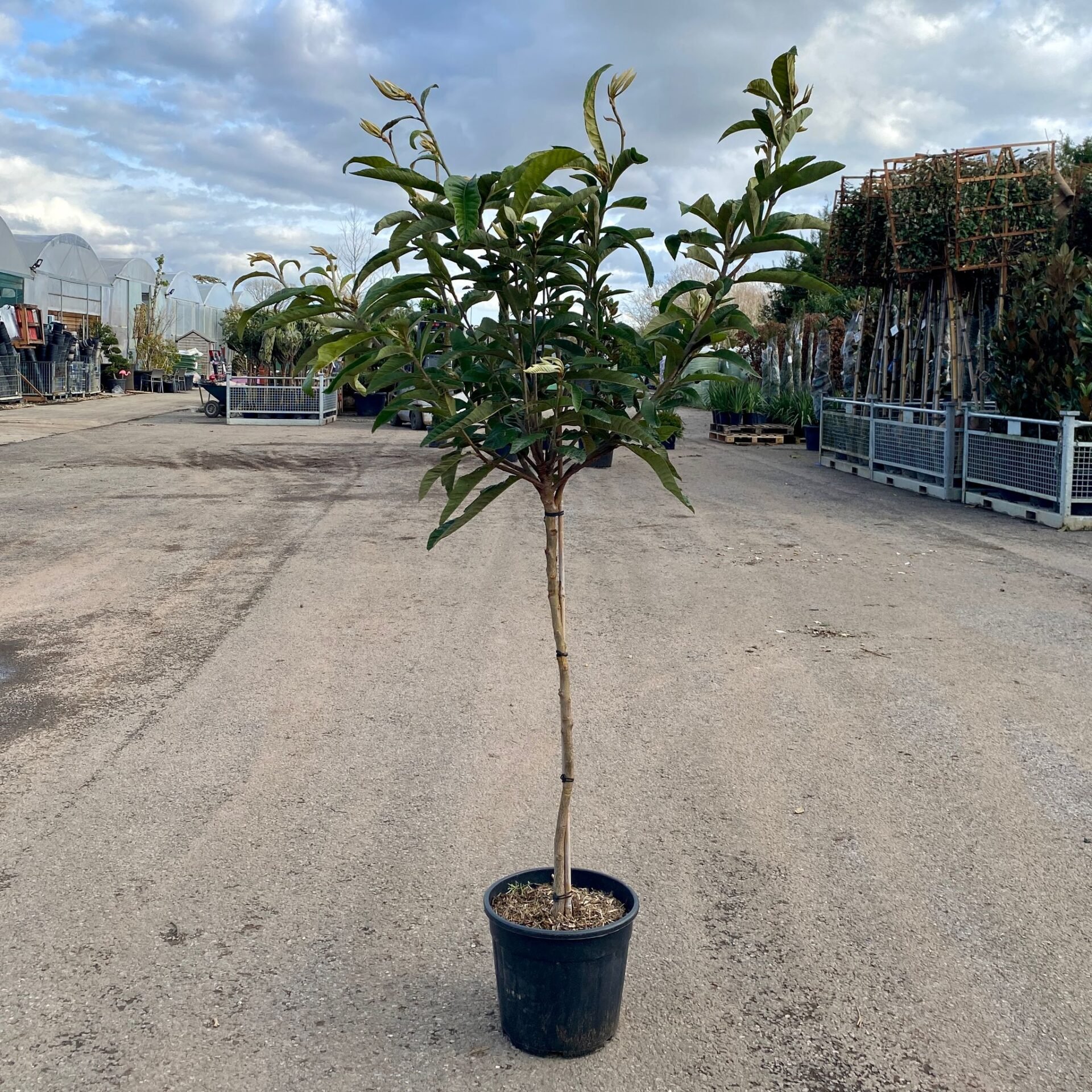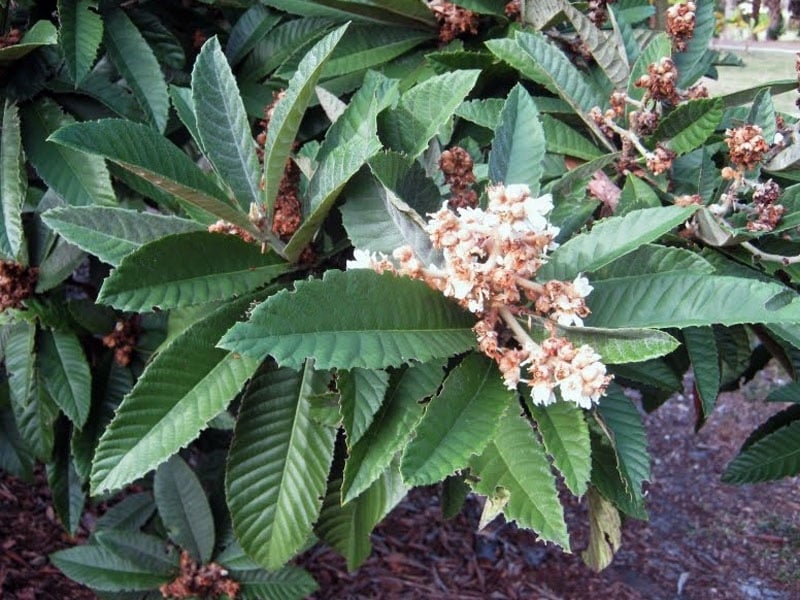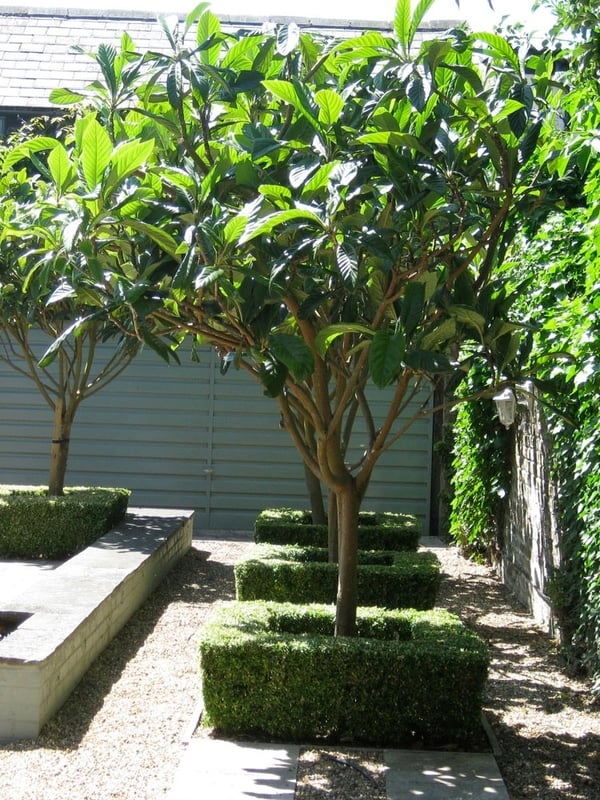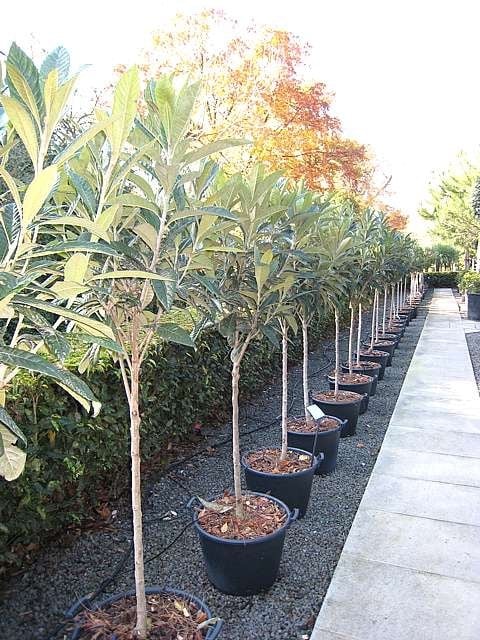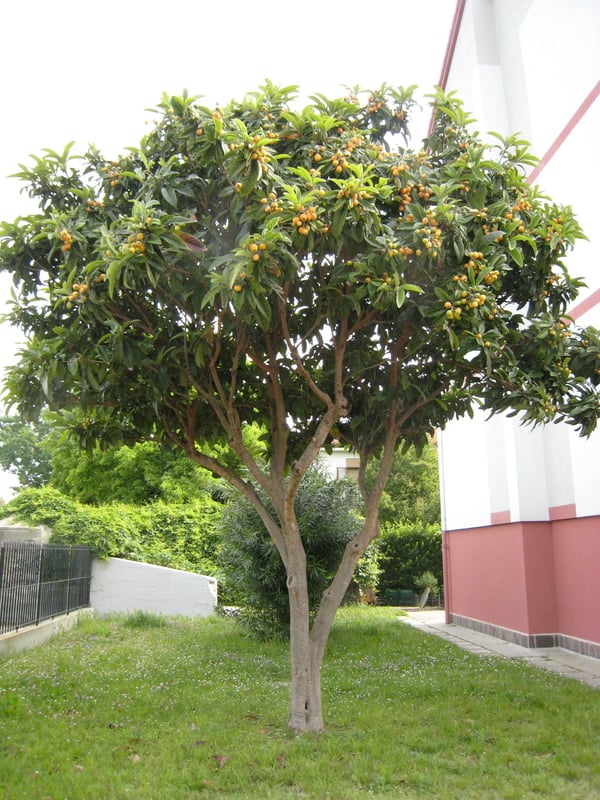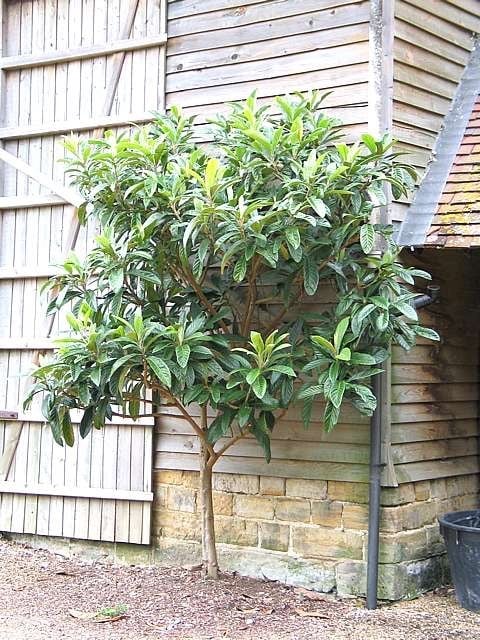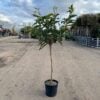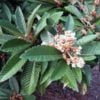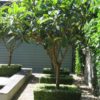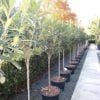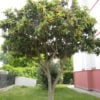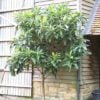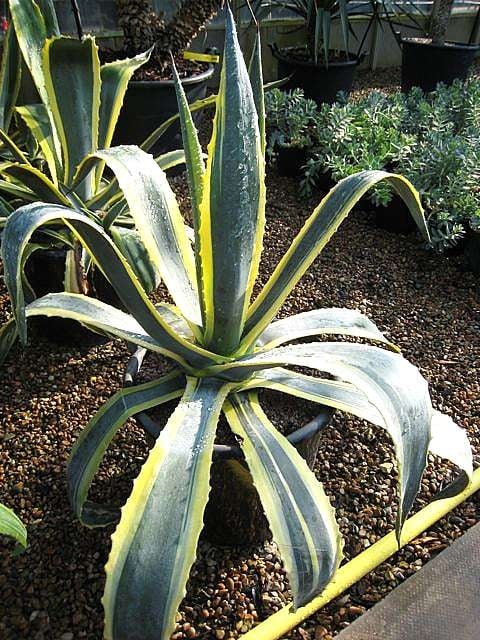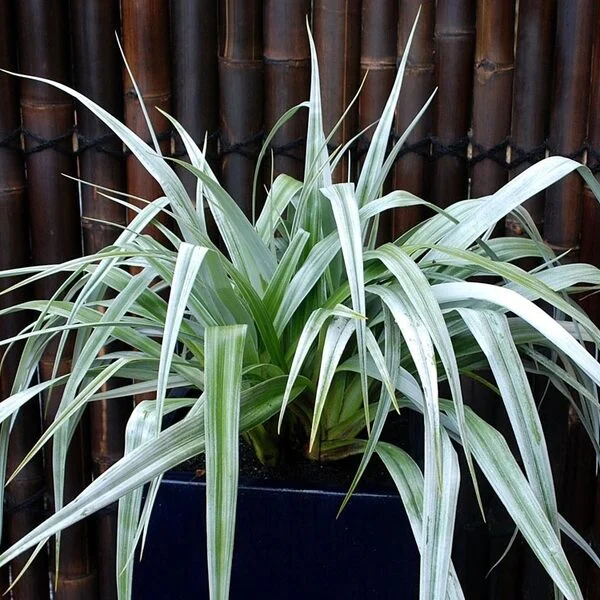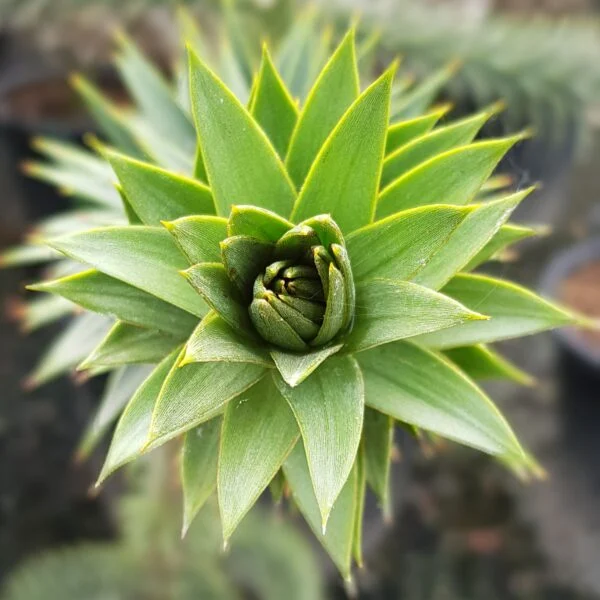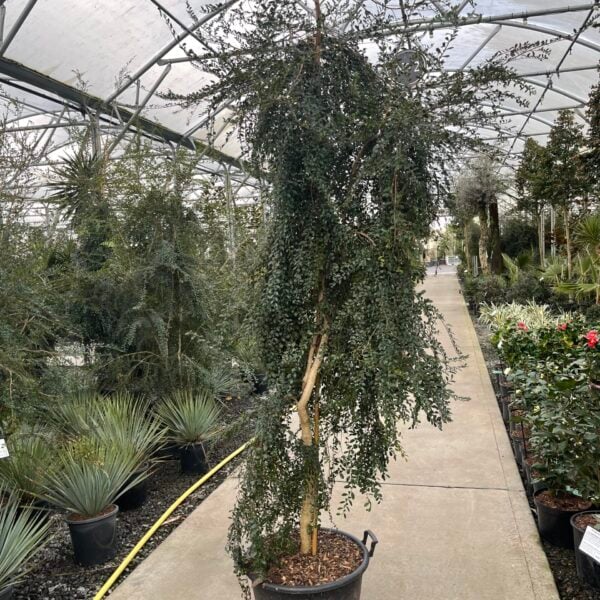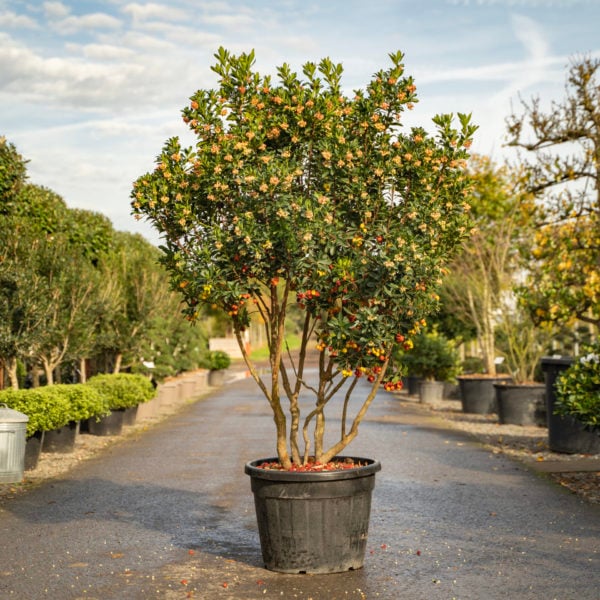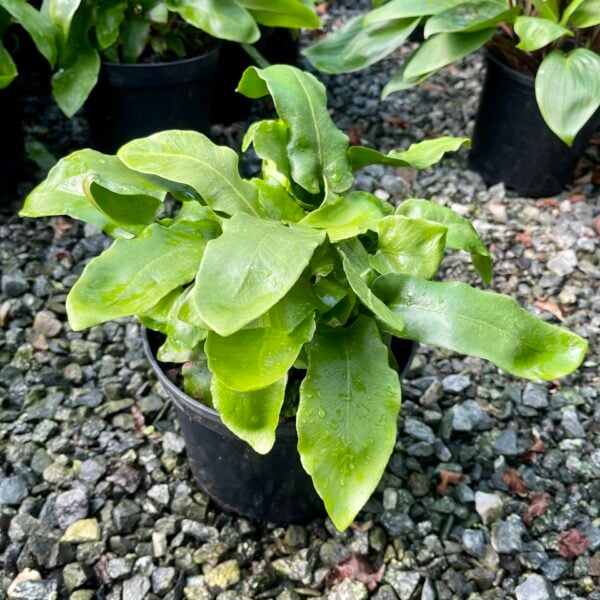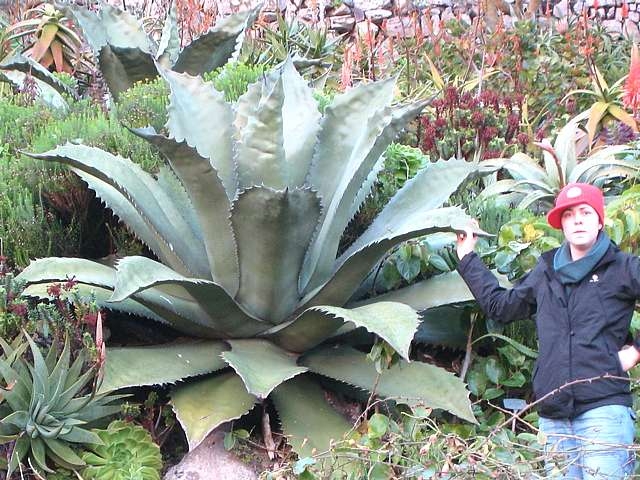Eriobotrya japonica (Loquat or Nespilo)
A stalwart. Fast growing, small evergreen tree from Japan. Big leaves and pale green shuttlecocks in spring. Flowers that smell of Pink Camay soap. Reliable, beautiful, robust. Please contact us for stock availability and size.

Hardiness level Amber
What a wonderful, useful, reliable little tree this is - and amazingly little known. In the Mediterranean, you'll see it mostly grown as a fruit tree. Delicious little apricotish orange fruit famous for being the first ripe fruit of the summer. We call them Loquats, Nespolo in Italy and Nispero in Spain and some similar word beginning with N in most languages. It flowers in winter which is why the fruit appears so early and is why it only produces fruit in Britain in mild gardens where the flowers don't get spoiled by frost. I used to help myself to some lovely ripe fruit that hung over a wall in June and July off the Bayswater Road in West London. When my son lived around there we'd have supper at a Greek restaurant off Westbourne Grove and then free pudding of Loquats round the corner. We grow them in Sussex and they love it and they always flower but they've never produced fruit. Too cold. The flowers are unimpressive to look at (small white clusters) but they smell exactly like Pink Camay soap. The face of Pink Camay soap used to be a rather fragrant lady called Katie Boyle. People of a certain vintage will remember her and understand why one of our names for Eriobotrya japonica is the Katie Boyle Tree. Cleve West used to write a horticultural column in the Saturday Independent and would occasionally phone me up for information. The piece he did on Eriobotrya was an almost verbatim repeat of our phone conversation - mostly about Katie Boyle as far as I can remember. The reluctance to produce fruit in Britain has a marvellous side effect - the leaves get enormous in our climate - especially if they're in a bit of shade. Well over 1ft long sometimes. I've seen it growing in southern Spain in May, covered in fruit with scrappy little, dusty leaves. As a piece of foliage, very superior in this country.
The spring brings the new growth and one of the great things about evergreens is the contrast between the old and the new leaves that's absent on deciduous plants. The young growth on these is particularly toothsome - pale green shuttlecocks in April and May, all over the tree. Being Japanese (the clue is in the name) as soon as we get some warm weather in March, they think the spring's arrived and burst into growth. If you're in a mild part of the country that's fine but in colder gardens, a subsequent frost can be severe enough to blacken all the new growth. There's nothing you can do about it and it'll start all over again but it's one of the penalties of oriental plants in a cold garden. Left to their own devices, these grow as large bushes but most of the ones we sell are half standards (3ft trunk) and they're very popular although we sell full standards (6ft trunk) and bushes too.
Trees in Hampstead and Wimbledon (the two area of greatest Loquat concentration in London) have grown to nearly 30ft which is large for a 'small tree'. Usually a half standard supplied by us will reach 20ft tall and 15 ft wide after 30 years but they lend themselves to being cut back to whatever size suits.
Unfussy about position. Any old soil - even quite poor and slightly waterlogged soil is often tolerated but not exactly recommended. This tolerance of poor soil conditions is greatly aided by the fact that all of the plants we sell are grafted on to tough-as-old-boots-Quince - see below). Sun or shade but avoid very exposed sites as the big leaves will get damaged. Always fun to do a bit of Creative Maintenance on; lift the crown, turn into a proper tree, train to be wider etc.
We get the young plants from an Italian nursery where they are produce a selected fruiting form and they propagate them by grafting onto the closely related Quince (Cydonia vulgaris) as a root stock. This is a common way of cloning a plant but in this case has a remarkable and (as far as I know) unintended consequence; they're very resistant to a fungal disease called Apple Scab which, if grown from seed, they succumb to all the time. As a result, we don't sell seed grown Eriobotrya.
N.B. When clipping several plants with the same tool, have a bucket containing a 5% bleach solution and swish your blades around for 30 seconds between plants to sterilise them. This will help avoid the chance of cross contamination of disease.
As with all woody plants, plant high, exposing as much of the taper at the base of the trunk as possible. Allowing soil to accumulate round the base of a tree can be fatal. Keep very well watered when first planted.
Additional Information |
|
|---|---|
| Soil Type | |
| Light | |
| Plant Type | Big Leaves / Exotics, Evergreen, Flowers, Screening Plants, Shrubs, Trees |
| Continent of Origin | |
| Specialist Plants | |
| Features | |
| Tree Size | |
| Situation | Coastal, Mild City Gardens, Plants for Pots, Sheltered Garden |
| Flower Colour | |
| Hardiness | |





